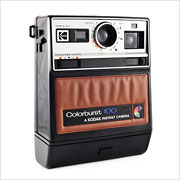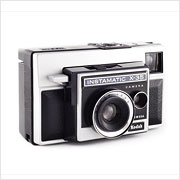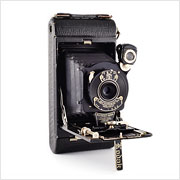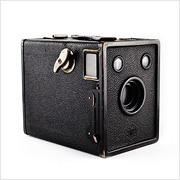Kodak Six-20 Bull’s Eye
The Kodak Six-20 Bull’s Eye is a box camera made of Bakelite, an early plastic. The shutter lever is located under a simple meniscus lens with a minimum focus distance of eight feet and a fixed shutter speed with manual bulb mode activated by the lever above the lens. The primitive viewfinder is only usable for approximating composition and runs along the top of the camera next to the circular metal knob that’s used to advance the film after each exposure. The little nub opposite the braided handle is used to keep the lens level when the camera’s resting on its side for portraits.





